NEXT Wednesday (August 10th) sees the first show jumping action get underway from the ECCO FEI World Equestrian Games in Herning, Denmark.
Dressage bloodlines last week, show jumping bloodlines this week; while they may seem like different worlds the same themes of leading sires, studbooks and household names apply to both.
Certainly much of the history of show jumping is viewed through the kaleidoscope of medal-winners from the world championships, first held in Paris in 1953. Its once-annual format changed to a four-year cycle in 1960 and by 1978 at Aachen, the separate mens and women world championships were merged. The team element was also added in that same year.
Another merger took place in 1990 when the World Equestrian Games (WEG) format of equestrian sports world championships was first held in Stockholm. The crowd-pleasing, if somewhat contentious, format of the top four riders swapping horses was dropped before the most recent Games at Tryon, where the home team were victors.
This year, it reverts again to the World Championships with jumping, dressage, para dressage taking place in Herning, while the eventing and driving championships take place in Pratoni, Italy, in September.
Changing times
Just one example of how bloodlines, horse types and even riders styles have changed from 1978-2018 is that all four USA riders at Tryon were on board European imports: Clinta (OS), Cristalline (BAVAR), Eddie Blue (KWPN) and Zeremonie (HOLST).
Back at the first team championship in Aachen, three of the four horses on the USA bronze-medal winning team were thoroughbreds: Balbuco, Jet Run and Tuscaloosa.
Jet Run and Michael Matz also won individual bronze that year while on the victorious British team was another American thoroughbred: David Broome’s Philco.
As the world championships progressed, the rise of the European studbooks becomes even more apparent.
French stars include Quito de Baussy and Jappeloup, (both on the French winning team at the first WEG in Stockholm, where Quito won a matching individual gold medal) and Diamant de Semilly, another French team gold horse at Jerez 12 years later.
Various German studbooks have also had their time in the sun, mainly with a group of individual gold medal-winning mares. These range from two earlier greats: Halla (Madrid, 1954) and Simona (Hickstead, 1974) to the striking wall-eyed chesnut San Patrignano Weihaiwej (The Hague, 1994) and her gold team medal comrade Ratina Z, right up to the reigning champion: DSP Alice (Tryon, 2018).
Benelux studbooks have emerged too as strong contenders at world championship level. Two individual gold medal stars this millennium are Zenith SFN (Normandy, 2014) and Vigo d’Arsouilles (Kentucky, 2010).
Kentucky was also where Plot Blue featured on the winning German team.
Irish-bred winners
And what about Irish-bred medal winners? Gowran Girl (1960), Beethoven (1970) and of course the landmark win of Liscalgot (2002) are the famous trio to have won individual gold medals.
The 2002 championships at Jerez de la Frontera were the best result for both Irish-breds and Irish riders in recent champions. Not only did Dermott Lennon live the dream as a world champion but Kevin Babington’s eighth place result with Carling King meant two Irish riders and horses in the top 10.
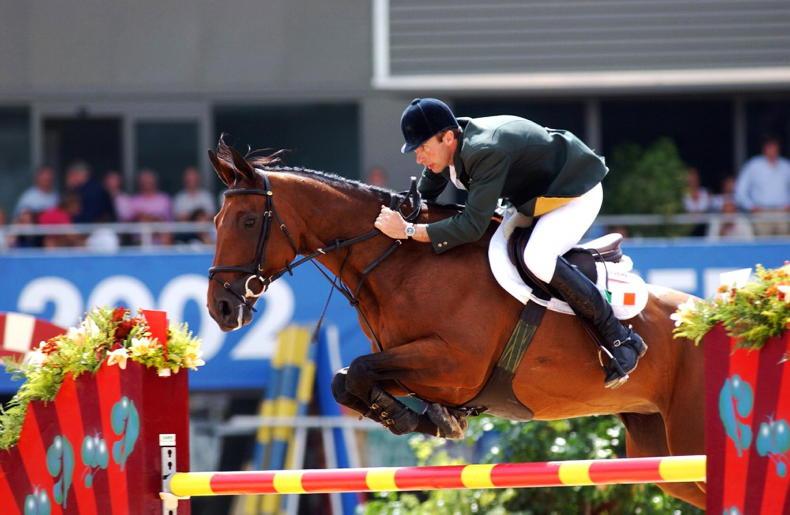
Dermott Lennon and Liscalgot jumping to become World Champions at Jerez, Spain, in 2002 \ Kit Houghton/FEI
As with the Olympics and European championships articles last year, the timeframe for looking at World championship medal-winning performers focusses from 2000 onwards.
A twofold reason as bloodlines from this millennium are of more practical interest and benefit to contemporary breeders and secondly, pedigrees and details are relatively easy to substantiate thanks to the myriad range of databases available now.
Liscalgot’s result puts the Irish Sport Horse (ISH) on the list of studbooks with individual gold medal winners. The honours are then equally divided between the Holsteiner Verband, BWP, KWPN and Deutsches Sportpferd (the latter is an amalgamation of mainly southern German studbooks).
Its two individual silver medal horses apiece for the KWPN and Selle Français, with the Westfalian studbook claiming one at Tryon for Clooney 51, and the Holsteiner Verband, Hanoverian Verband, KWPN, BWP and SWB each have an individual bronze medallist winner.
Modern-day studbooks can tend to be a generic label rather than an exclusive line of breeding. Even the strict policies of the Holsteiner Verband have seen a blend of outside bloodlines and yet interestingly, the trail invariably leads back to France in many WEG bloodlines.
Next week will decide who the next world championship medal winners are and the leading studbooks too. It looks set to be a fascinating showdown.
Did you know?
THE MEDAL WINNERS
2002 - JEREZ DE LA FRONTERA
Gold - Liscalgot (ISH). Touchdown - Tulla’s Pride, by Tula Rocket. Breeder: Terence Harvey. Rider: Dermott Lennon (IRL).
Silver - Dollar du Murier (SF). Jalisco B - Karielle, by Uriel. Breeder: Philippe Bodinier. Rider: Eric Navet (FR).
Bronze - Fein Cera (HOLST. Landadel - Cera, by Cor de la Bryere. Breeder: Harm Thormählen. Rider: Peter Wylde (USA).
2006 - AACHEN
Gold - Cavalor Cumano (HOLST). Cassini - Chanel II, by Landgraf I. Breeder: Willi Lührs. Rider: Jos Lansink (BEL).
Silver - Authentic (KWPN). Guidam - Gerlinsa, by Katell. Breeder: H. Morsink & G.H. Morsink. Rider: Beezie Madden (USA).
Bronze - Shutterfly (HANN. Silvio I - Famm, by Forest. Breeder: Uwe Dreesmen Hesel. Rider: Meredith Michaels-Beerbaum (GER).
2010 - LEXINGTON
Gold - Vigo d’Arsouilles (BWP). Nabab de Reve - Illico d’Arsouilles, by Fleuri du Manoir. Breeder: Viane Didier. Rider: Phillipe Le Jeune (BEL).
Silver - Seldana di Campalto (KWPN). Emilion - Eldana, by Alme Star. Breeder: A.B van der Wal. Rider: Abdullah Al-Sharbatly (KSA).
Bronze - Hickstead (KWPN). Hamlet - Jomara, by Ekstein. Breeder: B. van de Schijndel. Rider: Eric Lamaze (CAN).
2014 - CAEN
Gold - Zenith SFN (KWPN). Rash R - Sascha, by Fuego du Prelet. Breeder: H. Voort. Rider: Jeroen Dubbeldam (NED).
Silver - Orient Express HDC (SF). Quick Star - Kamtchatka, by Le Tot du Semilly. Breeder: EARL Haras de la Gisloterie. Rider: Patrice Delaveau (FR).
Bronze - Cortes C (BWP). Randel Z - Orchidee van de Tombeele, by Darco. Breeder: Bart Clement. Rider: Beezie Madden (USA).
2018 - TRYON
Gold - DSP Alice (DSP). Askari 173 - Landblume, by Landrebell. Breeder: Ralf Mewes. Rider; Simone Blum (GER).
Silver - Clooney 51 (WESTF). Cornet Obolensky - Fraulein vom Moor, by Ferragamo. Breeder: Bernd Richter. Rider: Martin Fuchs (SUI).
Bronze - Albfuehren’s Bianca (SWB). Balou du Rouet - Coco, by Cardento. Breeder: Stal Hickey. Rider: Steve Guerdat (SUI).
BY THE NUMBERS
17th
Place for Amanda Derbyshire (GB) and Luibanta BH, the highest result at Tryon for an Irish-bred show jumping horse.
10
Liscalgot foals recorded on IHR Online.
3
Irish-bred individual gold medal winners at the world show jumping championships: Gowran Girl (Water Serpent), Beethoven (Roi d’Egypt) and Liscalgot (Touchdown).
2
Individual silvers won by Eddie Macken with Pele and Boomerang.
1
Irish Sport Horse on 2022 World Championship Irish team - Pacino Amiro.
Irish show jumping team at Herning
Brooklyn Heights (BWP). Nabab de Reve - Cordula de Laubry, by For Pleasure. Breeder: Eric Polfliet. Rider: Denis Lynch.
C Vier 2 (HOLST). Cardento - S-Via Thia, by Concorde. Breeder: W. Wolters. Rider: Cian O’Connor.
Legacy (ZANG). Chippendale Z - Regina D, by Bon Ami. Breeder: Romain Rotty. Rider: Daniel Coyle.
Pacino Amiro (ISH). Pacino - Carnone Dancing Queen, by NC Amiro. Breeder: Simon Scott. Rider: Bertram Allen.
VDL Cartello (HOLST). Cartani 4 - B-Estelle, by Lord. Breeder: Witt Pferdezucht. Rider: Darragh Kenny.
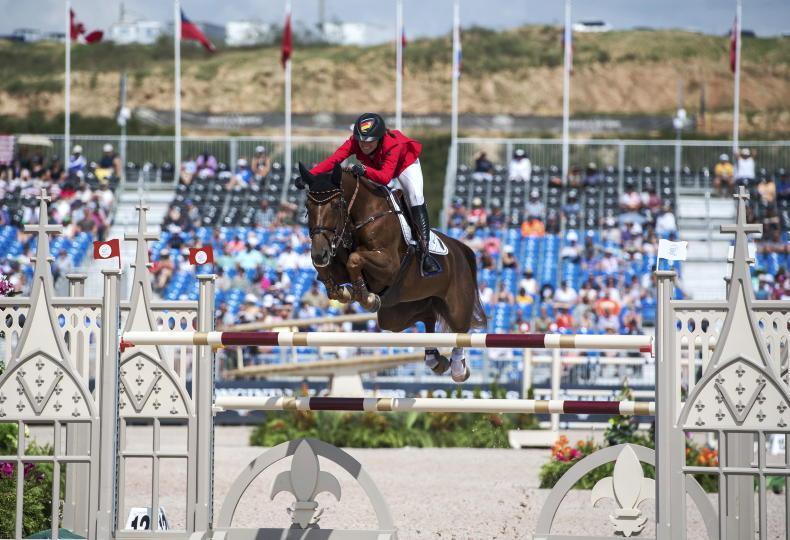



 This is a subscriber-only article
This is a subscriber-only article
 It looks like you're browsing in private mode
It looks like you're browsing in private mode





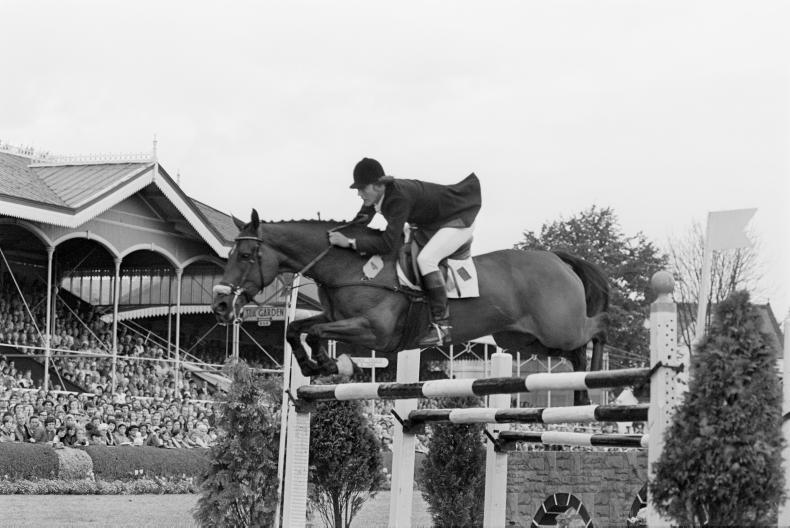

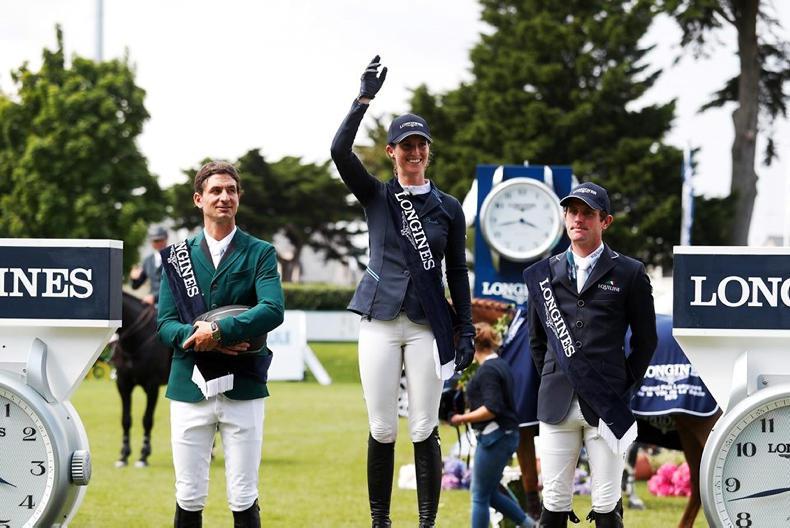

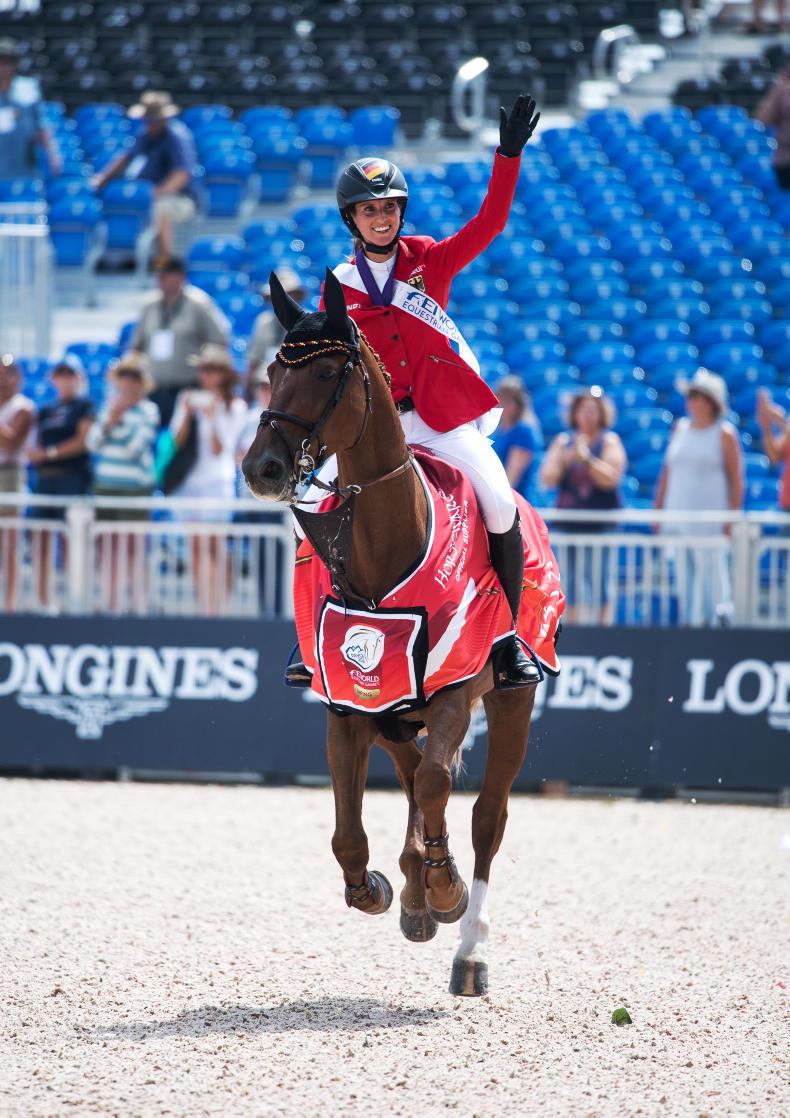


SHARING OPTIONS: